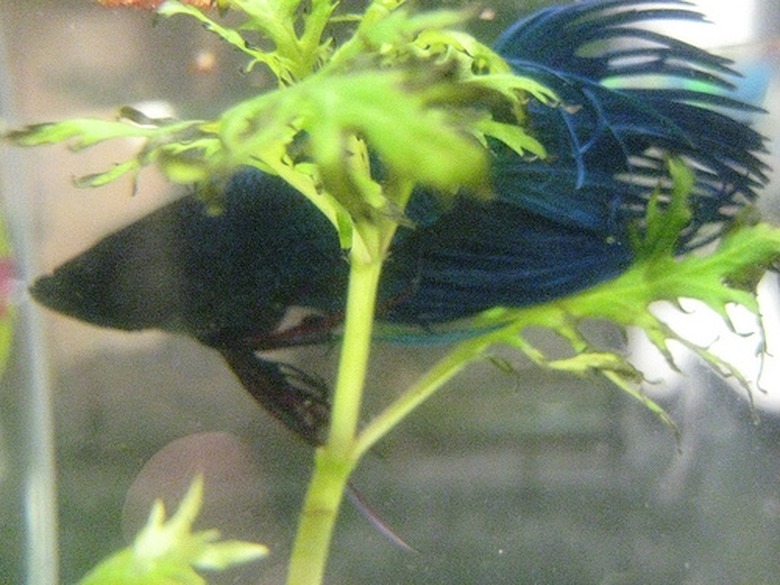What Live Plants Do You Use With Beta Fish?
Adding an aquatic plant to your beta fish bowl is both functional and aesthetically pleasing. Not only do natural aquatic plants oxygenate the water and air for your beta, they also help keep your beta's home clean by consuming its waste. If you watch carefully, you might even catch your beta nibbling on the new plant as a snack.
Before You Choose Your Plant
Before You Choose Your Plant
When shopping for plants for your beta fish, it's crucial that you know which plants will thrive in the environment. It's even more important to make sure that the plant won't harm your fish in any way or invade its living space. Spiny or very firm plants (natural or plastic) may look nice but if your fish likes to swim through it, the plant may cause injury. Remember, your beta is a delicate creature; you don't want to introduce something into its environment that could cause it harm.
Make Sure Your Plant is Safe for Your Beta
Make Sure Your Plant is Safe for Your Beta
One of the best ways to guarantee that your plants aren't toxic to your fish is to ask an aquatic life expert. The next time you're in your local pet store or aquarium supply store, ask the salesperson what they can recommend, and which plants are best for your beta fish. Not all plants are available in all areas, so it's always good to double check with the clerk to see what they have to say. If you are unsure about how your fish will react, you can always choose a plastic plant instead of a natural, living plant.
Living Plants for Your Beta Fish
Living Plants for Your Beta Fish
Chinese Evergreen The Chinese evergreen is a hydroponic plant that can be sustained with minimal lighting. This plant is green, leafy and works well with bowls or tanks without direct lighting available.
Philodendrons Philodendrons naturally occur in wet environments, such as swamps, and they thrive in an aquatic setting. The heart leaf philodendron is a common choice for the beta fish as it floats on top of the water while the roots dangle below.
Pothos Also known by the scientific name Epipremnum aureum, pothos plants are a popular variety used in beta fish tanks. Much like the philodendron, this plant is not fully submerged, allowing its roots to dangle in the water. Please note that the pothos species is toxic to cats and dogs, so do not choose this plant if you have house pets.
Peace Lily The peace lily is commonly used as a decorative plant in beta fish bowls and tanks. The plant does not need to float on top; however, it's advised not to completely submerge it so that it can continue to absorb carbon dioxide from the air, which will keep it healthy.
Keeping Your Living Plants and Beta Healthy
Keeping Your Living Plants and Beta Healthy
You always want to pay close attention to the aquatic plants in your beta's bowl or tank. If the roots start growing wildly, take the plant out and trim them back. Too many roots can cause crowding, which isn't healthy for the fish. An abundance of roots can also make the plant sick because there won't be enough nutrients to sustain it. If you see that the roots have turned brown beyond a trimming point, remove the plant and replace it with a healthy one.
Plastic Plants vs. Living Plants
Plastic Plants vs. Living Plants
Plastic plants look nice in tanks; however, living plants are the better choice if they are available to you. Unlike plastic plants, which tend to be firm and stationary, natural plants sway in the water, which is lovely to look at and more fun for your fish to interact with. Additionally, your fish won't enjoy the health and cleanliness benefits of a natural plant if you choose a plastic one instead.
